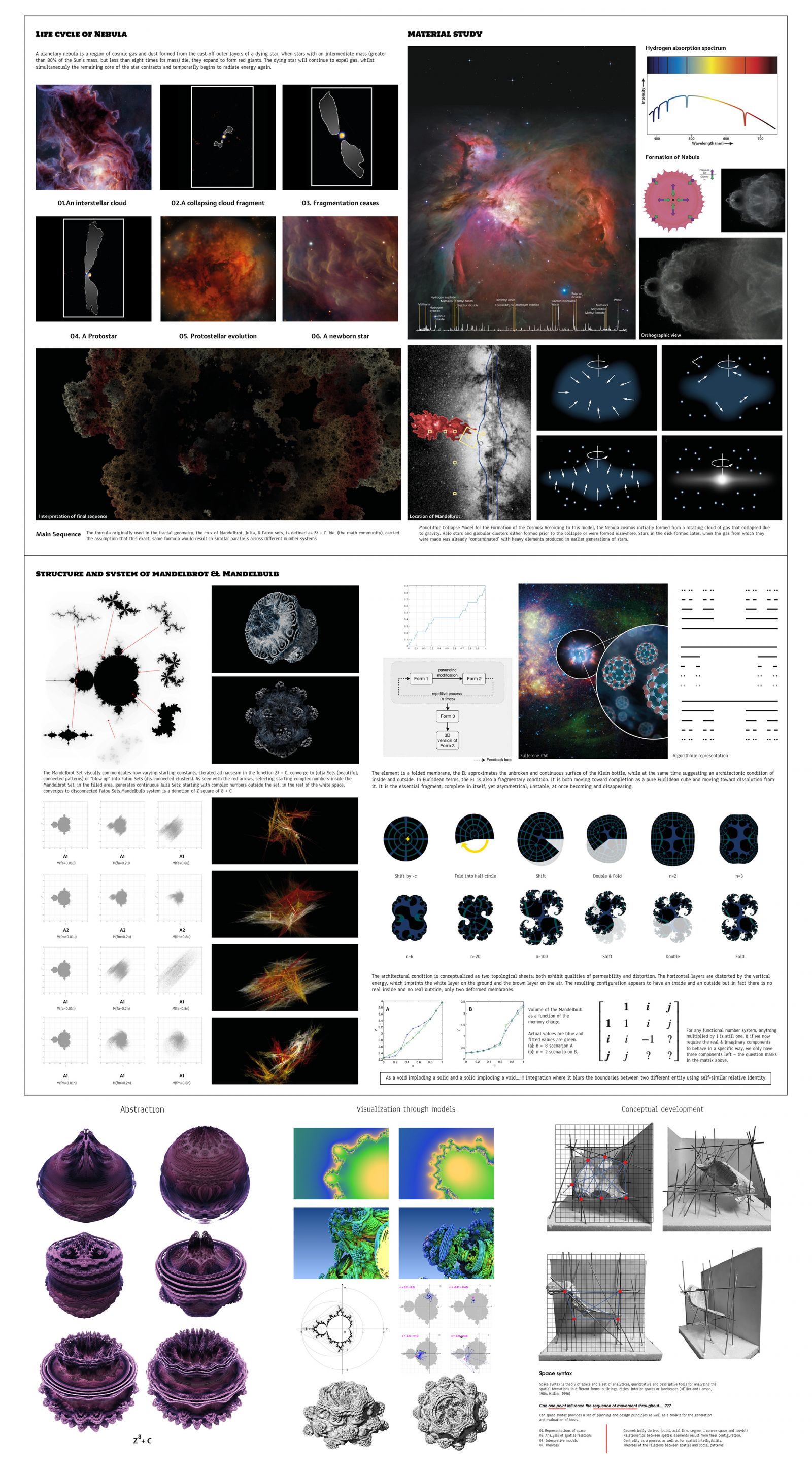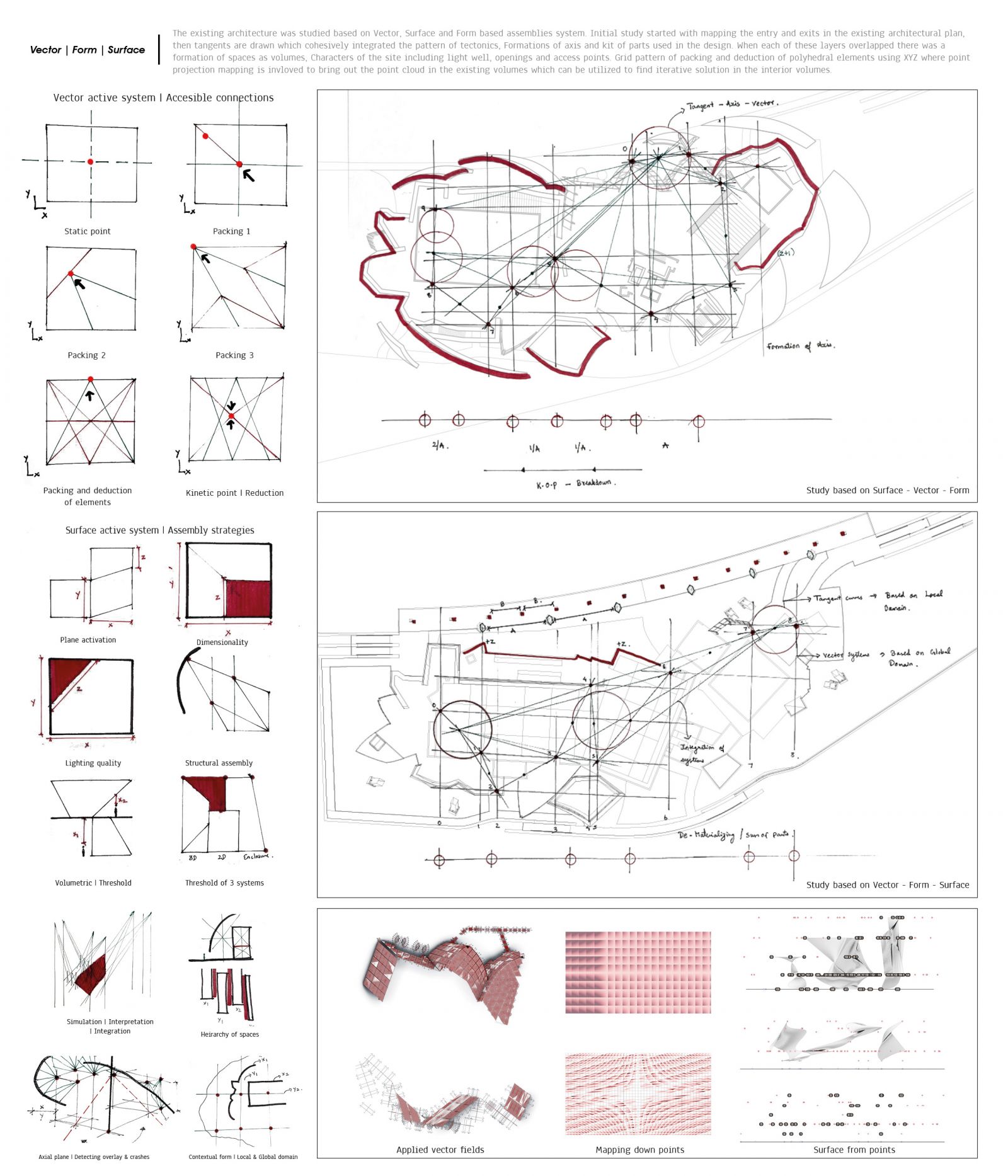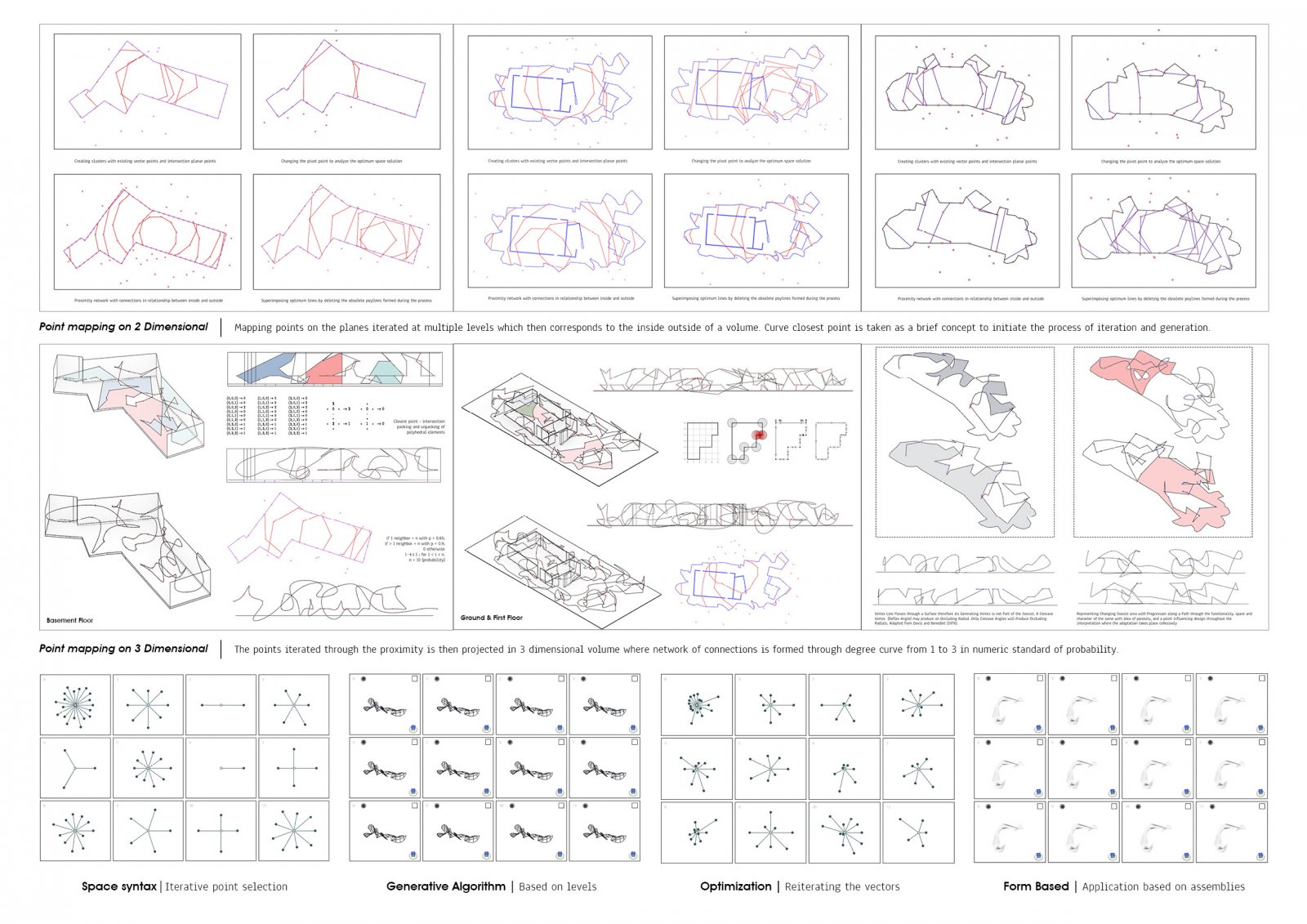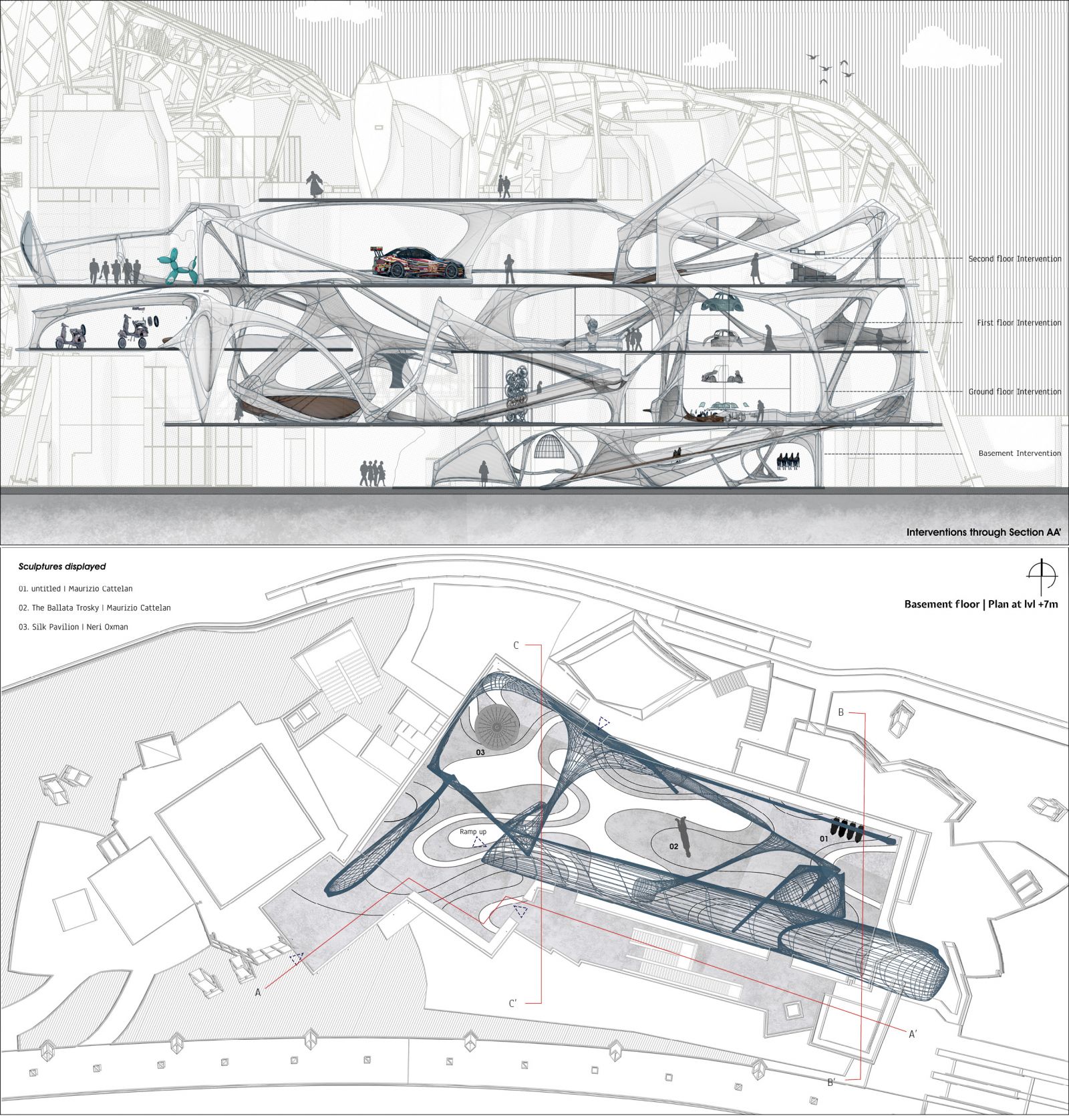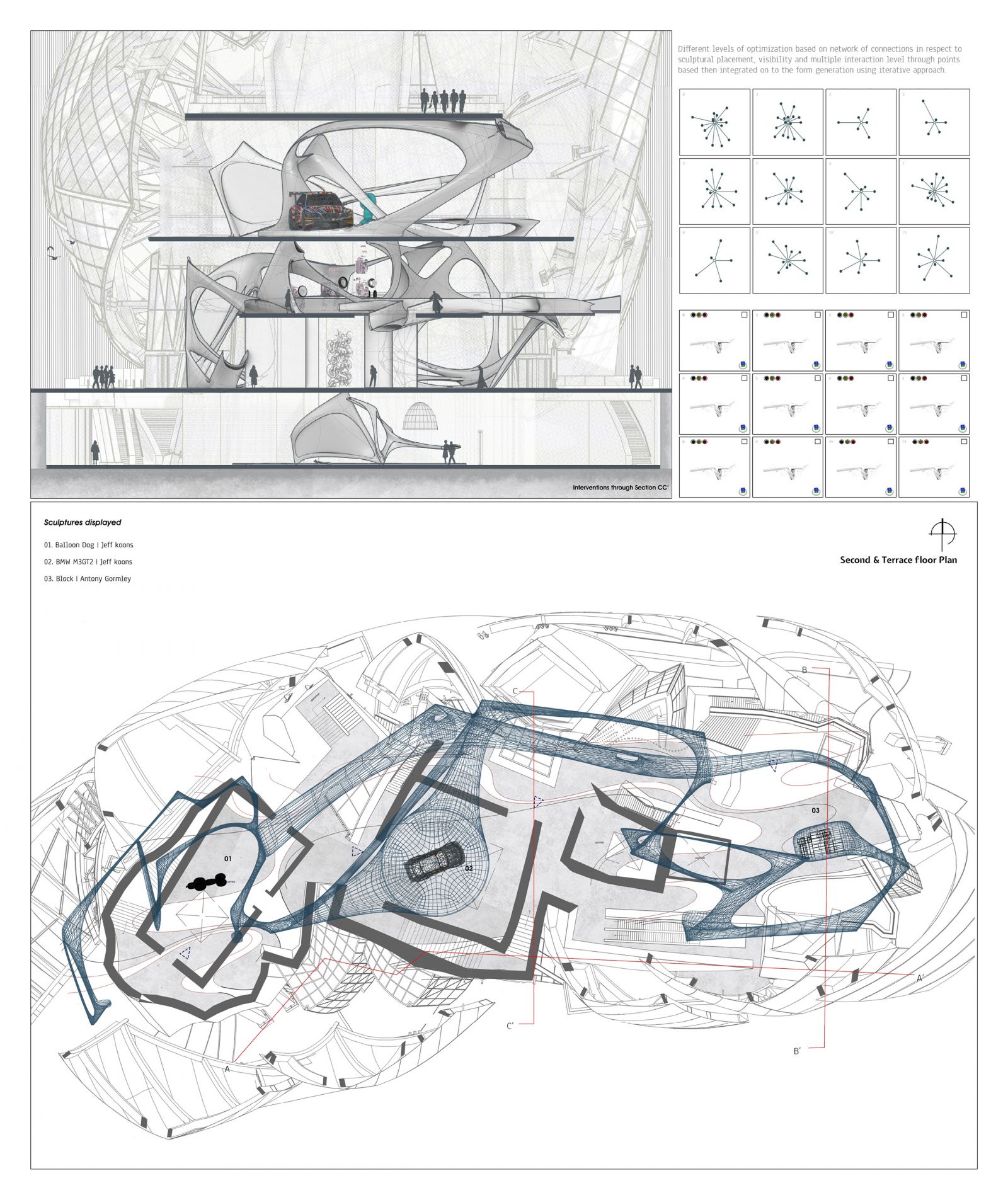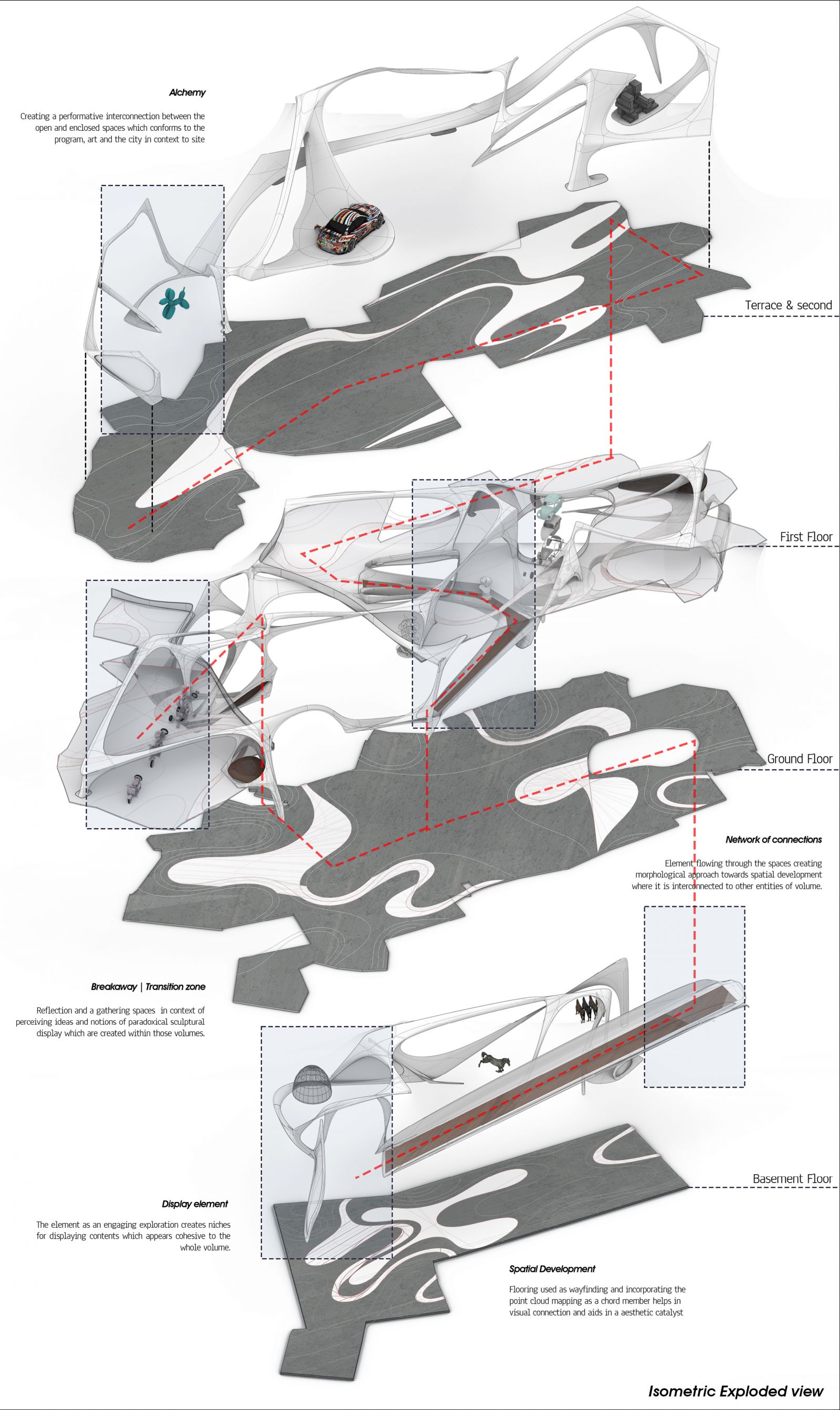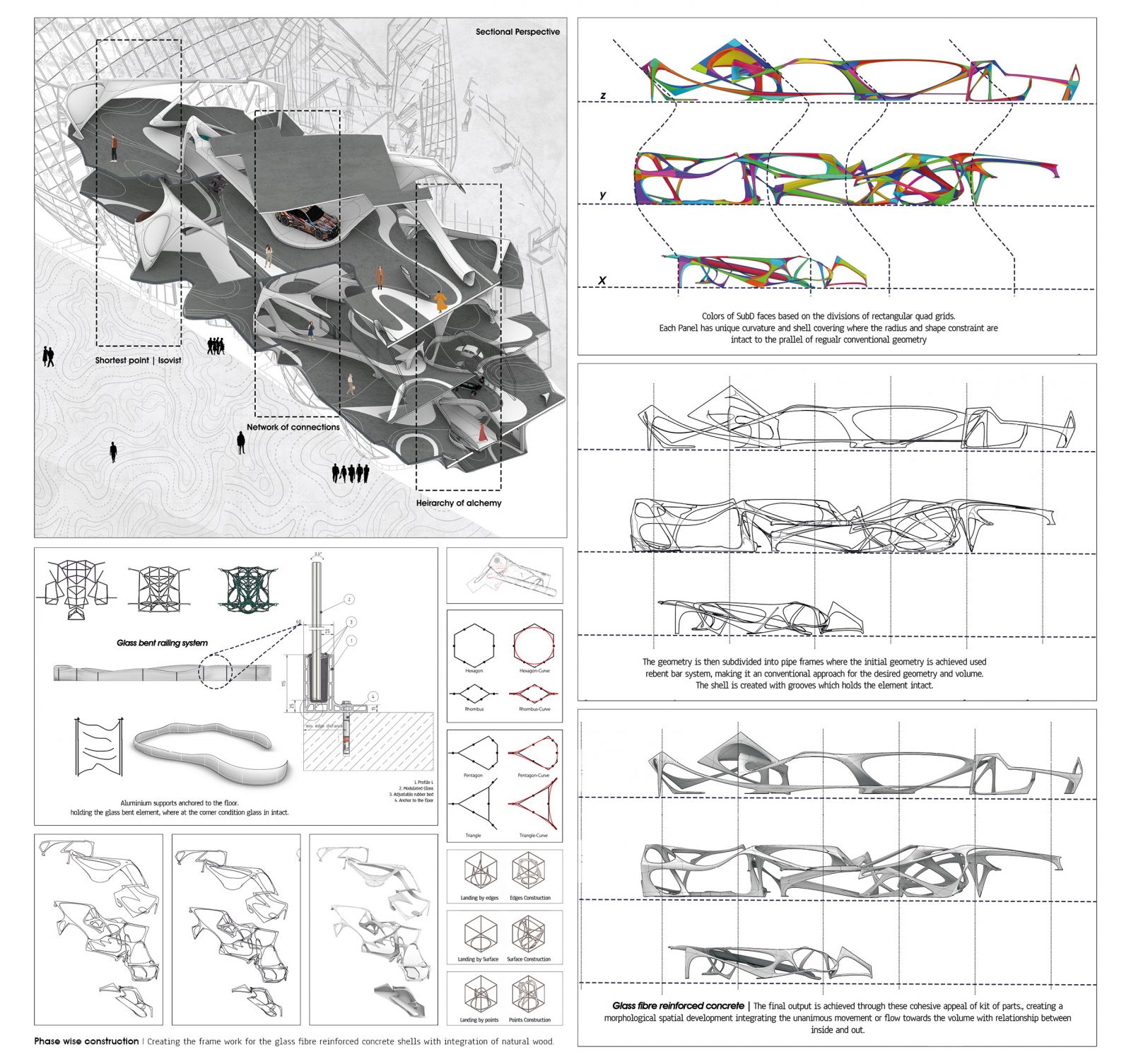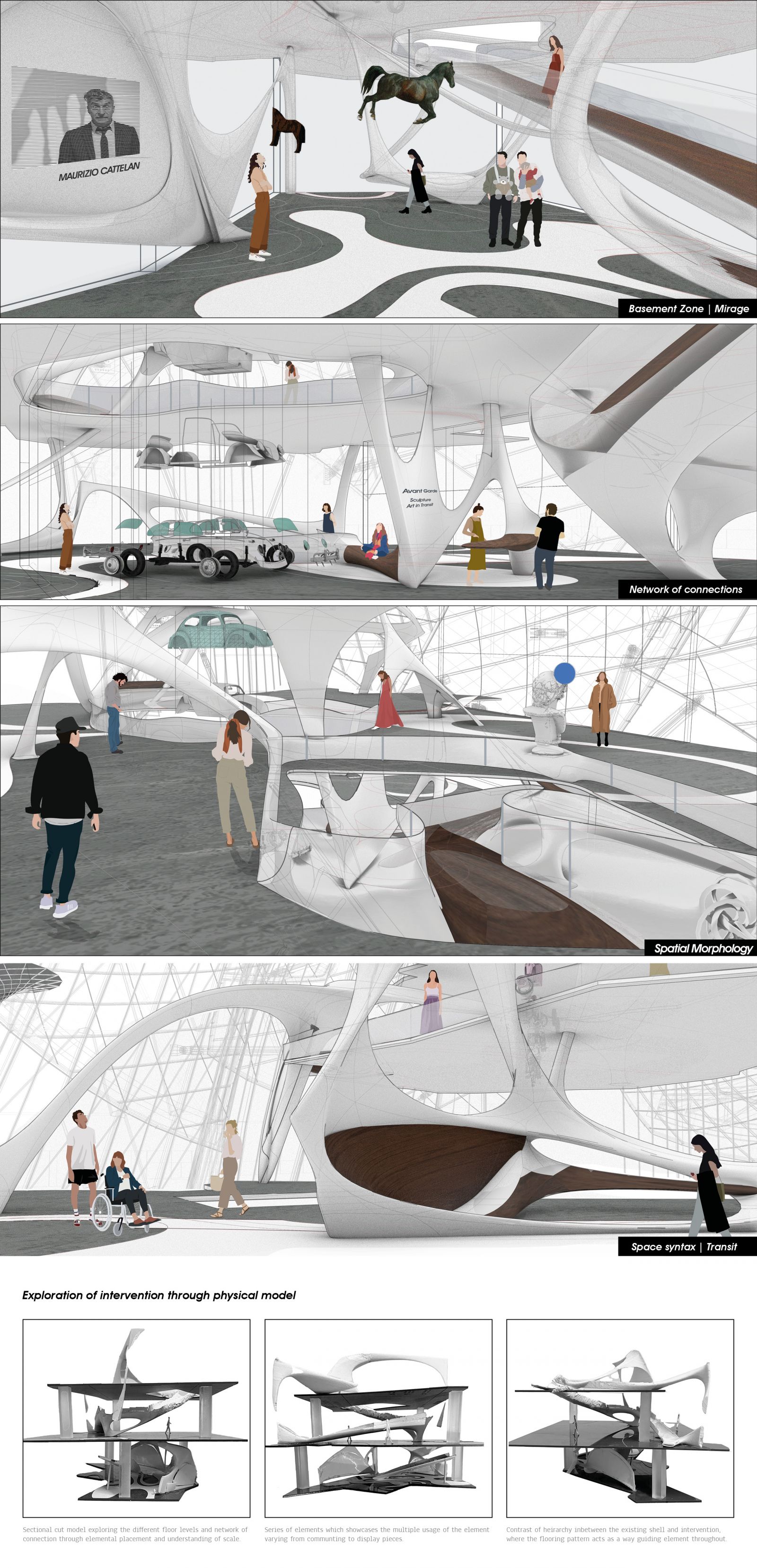Your browser is out-of-date!
For a richer surfing experience on our website, please update your browser. Update my browser now!
For a richer surfing experience on our website, please update your browser. Update my browser now!
Computational in interior design acts as a catalyst of formalizing new theoretical directions and
postulating new design materialization beyond the perception. Association of design with function,
precedent based design and typologies are still in coherent process of evolving into generation, iteration,
performance-based design and materialization through culmination between emerging technologies and
architectural theories. Understanding through integrating the reverse work flow of form finding, performance
simulation and evaluation leads to a morphological approach towards spatial development, where network
of connections, and challenging the highly material word tectonic and the immaterial word digital into an
alchemy of digital tectonics.
Can one point influence the design throughout. Engaging interior design with the exploration of complex
geometry i.e., “free forms” (Zellner, 1999) as well as related materialization, process of fabrication and
manufacturing technologies. ‘Form’ must be ‘informed’ by considerations of ‘performative’ principles to
subscribe to a logic of material ‘formation’
The art, city and site evokes certain parameters and constraints in parallel to the light quality, built
material, tectonics of site and character of the design, wherein lies the proposition of approach towards a
vector applied field study that in turns formulate the design elements through object ontology.
Implementing through certain achieved parameters and constraints which is developed throughout the
process in finding the design decisions which are capable of culminating the priori of existing construct
and a dynamic stochastic approach towards design, where all the real world application from structure to
material is been analyzed, performed and evaluated through digital processes, where the meaning of a
designer becomes the new paradigm in which the output is categorized and formulated through certain
decision making where the final appearance is a product not only of the designer’s imagination alone, but
of the generative capacities of the constructed parameters and constraints.
